
When Final Fantasy VII Remake came out, it was the same year the next generation PlayStation console would launch. It was a game that pushed the PlayStation 4 to its absolutely limit with the Unreal Engine 4, boasting impressive visuals for the most part and stable performance.
With both Final Fantasy VII Remake and the PlayStation 5 coming out the same year, it could be easy to wonder what it would have been like if Square Enix released their opus as a launch title for the new console generation. This remake is intended to be a multi-part revision, and coming out so late in the PlayStation 4’s lifecycle, seems unlikely that all future parts will be on Sony’s fourth console.
Square Enix has to look ahead and ensure that Final Fantasy VII Remake will have a future, and can be consistent with the inevitable Part 2. With Final Fantasy VII Remake: Intergrade, Square Enix has not only boosted the visuals and frame rate to a level not possible on PlayStation 4, but has done many tweaks and adjustments to refine the gameplay and improve playability.
These changes were substantial enough to warrant a full blown review, rather than a mere Port Report. With our review for the PlayStation 4 original in mind; here’s what we thought of Final Fantasy VII Remake: Intergrade on PlayStation 5.
Final Fantasy VII Remake: Intergrade
Developer: Square Enix
Publisher: Square Enix
Platforms: PlayStation 5
Release Date: June 10th, 2021
Players: 1
Price: $69.99 USD

Final Fantasy VII Remake was a frustrating experience for fans of the real Final Fantasy VII on PlayStation. It often showed so much promise, and was close on delivering on the experience expected of a remake of the most important JRPG Square ever made.
It was easy to get swept up in the action and excellently directed cutscenes, while impeccably rearranged tracks of one of the greatest soundtracks ever composed swells, rises and crescendos. Final Fantasy VII Remake was a game of very high highs, but was also rotten with moments of extremely low lows.
Whenever the story of the original is followed closely, this game fired on all eight cylinders. Whenever it tried to do new things or introduce “Nomura-isms,” the game became embarrassing.
Compounded with the meta aspect of the story taking over, and a gross misunderstanding of what certain scenes meant, Final Fantasy VII Remake shows signs it may not be able to course-correct itself after the damage that has been done.
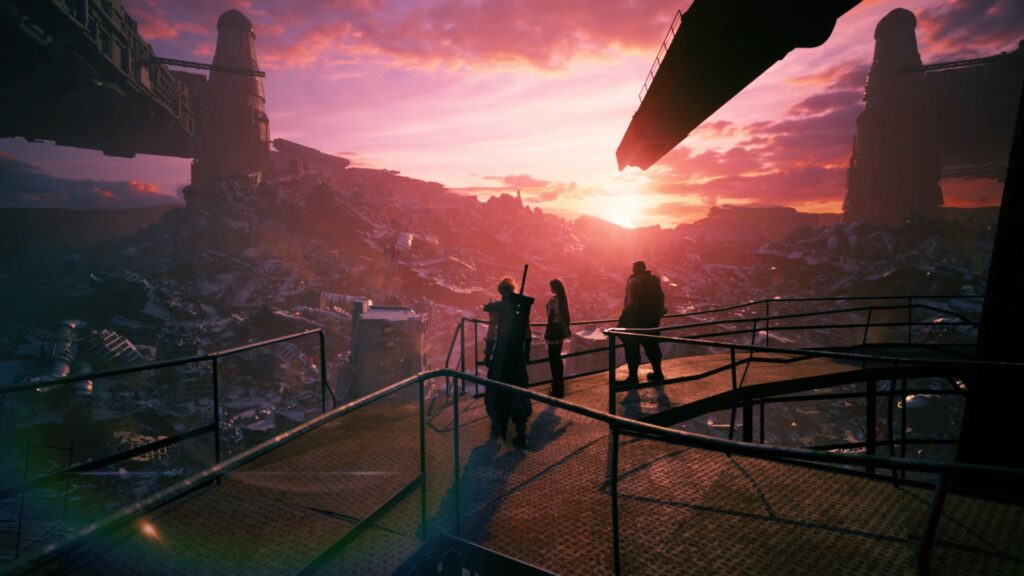
Final Fantasy VII Remake is ultimately a less efficient retelling of the first five to six hours of the real Final Fantasy VII, stretched to 30 plus hours. For some, this is enough because most gamers who never played the original only know the Midgar arc, and the iconography associated with it.
Final Fantasy VII Remake: Intergrade won’t change any minds over the way the story is being handled. Questionable story direction is the same as it was in the vanilla release from 2020, and the only extra story content is in the form of DLC with INTERmission (sold separately for anyone who already owns Final Fantasy VII Remake).
Getting past these disappointments will find that Intergrade is an exceptional action game, and improves the gameplay thanks to various adjustments. Doubling the frame rate from 30 to 60 makes the playability smooth and fluid. Nuances in the animation are so much more pronounced, and the action feels so much faster and responsive.
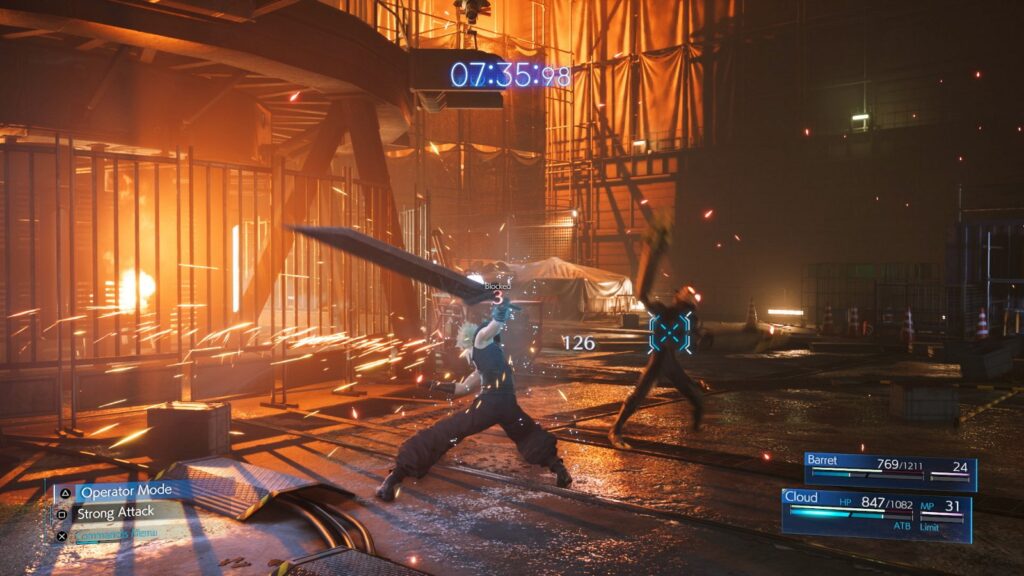
By doubling the refresh rate, the party has many more frames to allow some extra flexibility during play. The developers capitalized on this by granting more input time, to a point it’s possible to alternate between Cloud’s Operator and Punisher modes mid-combo.
Guarding also is snappier than before, and can be used to cancel during attacks across all characters. This smooths and quickens Cloud’s counter attacks while using Punisher mode; an adjustment that is a godsend on hard mode. In general, all abilities are more responsive with faster animation wind-ups.
The flow of battle feels much faster and more aggressive than it did on PlayStation 4. With more options for canceling and being able to switch stances or chain abilities together in this way; this version of Final Fantasy VII Remake has a much higher skill ceiling than before.
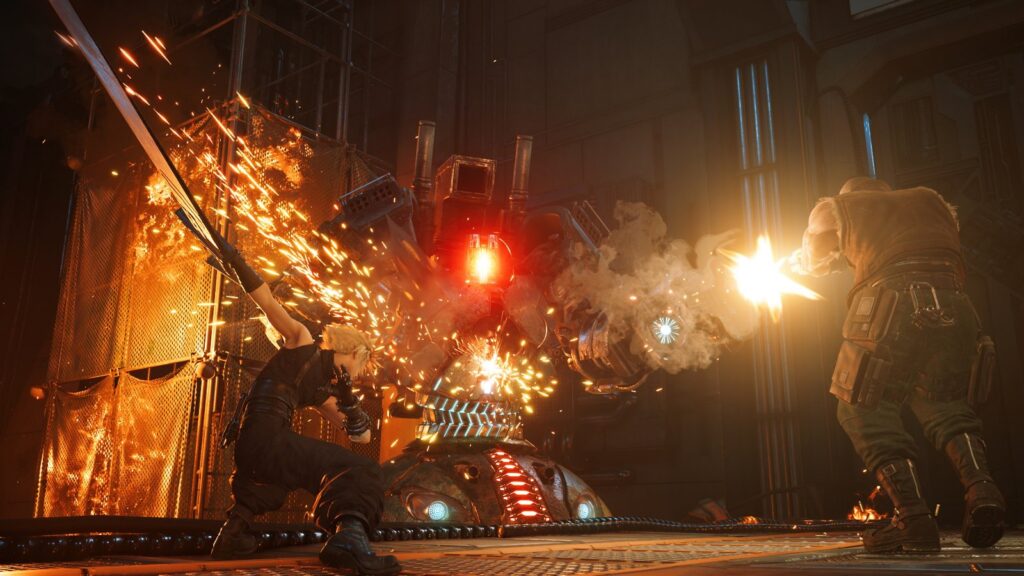
It’s so much easier to fill up the stagger meters and do huge numbers to enemy HP. The battle with the Hell House is much fairer now that characters have a slight edge on mobility, and can’t be interrupted as easily. Aero Materia used to have a tendency to miss, but now it is accurate, and the wind gusts home in on targets.
Of all the Materia in the game to have been improved, it was Synergy that has gone from useless to becoming utterly indispensable. Synergy Materia works by attaching it to the elemental green spells or poison.
Whichever character has it equipped isn’t being controlled by the player, will cast that spell whenever the player uses an offensive ability. This only would work if the Synergy Materia holder had enough MP, and had at least one ATB charge.
This was extremely limiting because no matter what Synergy was attached to, the wielder would only cast the level one version of the spell, regardless if the attached Materia was at max level. Synergy was unreliable and not worth effort to equip, but Intergrade changes how it works in a big way.
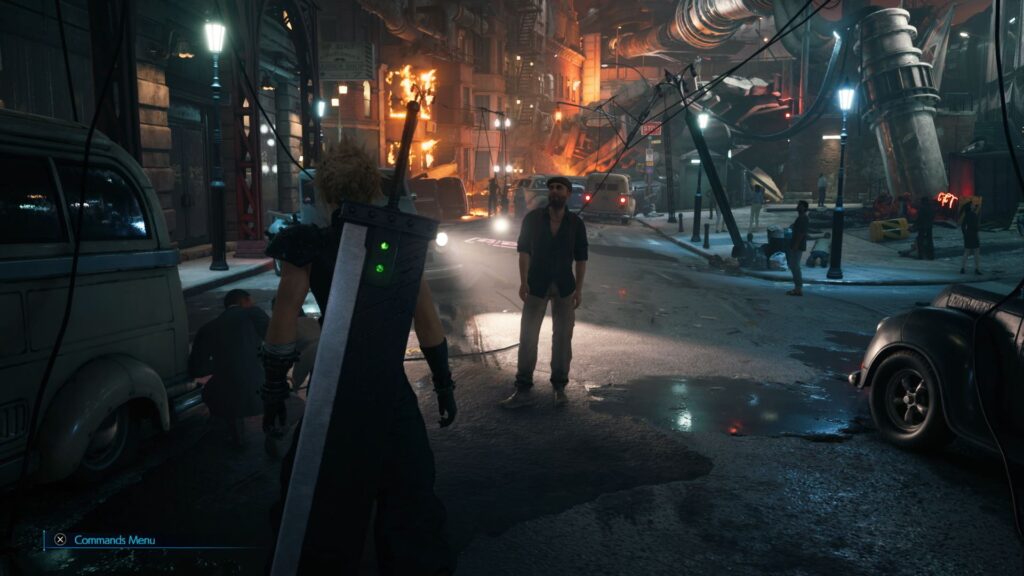
Intergrade removes the need for MP or ATB charges, and it has no cool down at all. This effectively adds free spells as an option, devastating for any enemy with an elemental weakness, and saves huge amounts of MP. The pressure this can be used to apply on enemies is indescribable, and can break the game in the hands of a clever player.
Synergy still only does the level one version of whatever spell is attached, but at least this time it comes at no cost. This opens up the potential for more creative builds and experimentation in ways that were not possible in the vanilla game, and it was possible because of a small change.
Other small changes that greatly improve playability is that certain abilities can’t be interrupted anymore, and some can be chained together. One after another abilities can be stacked, and devastating combos are fluidly connected and can be canceled at the player’s whim.
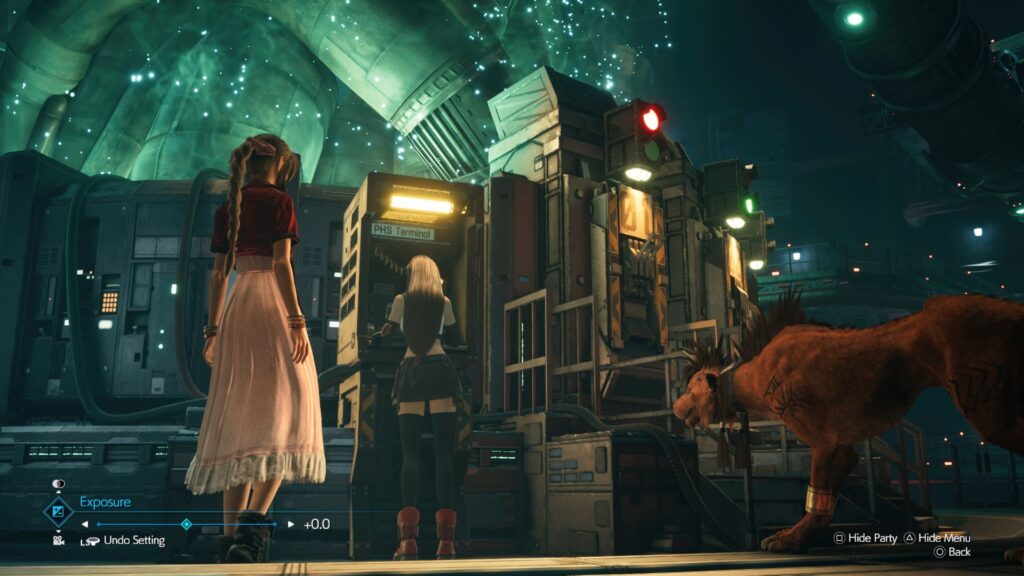
Intergrade is undeniably the most polished and creative action game that Square Enix ever built. The systems in place were already decent at the time of release for the vanilla game, but this version on PlayStation 5 has so much more flexibility and options for higher levels of play.
The only thing missing is a turbo mode to make the combat even spicier and more intense. A 30% speed increase during battle would have made Intergrade on par with Devil May Cry V: Special Edition, as far as upgraded ports go.
Final Fantasy VII Remake has impressive visuals, but it sometimes got sloppy in a few areas. Everyone knows about Cloud’s apartment door texture that is still loading to this day, and the low resolution sky boxes that resemble a pre-rendered backdrop from the real Final Fantasy VII. These were stand out flaws in a huge AAA production that looked exceptional for the most part.
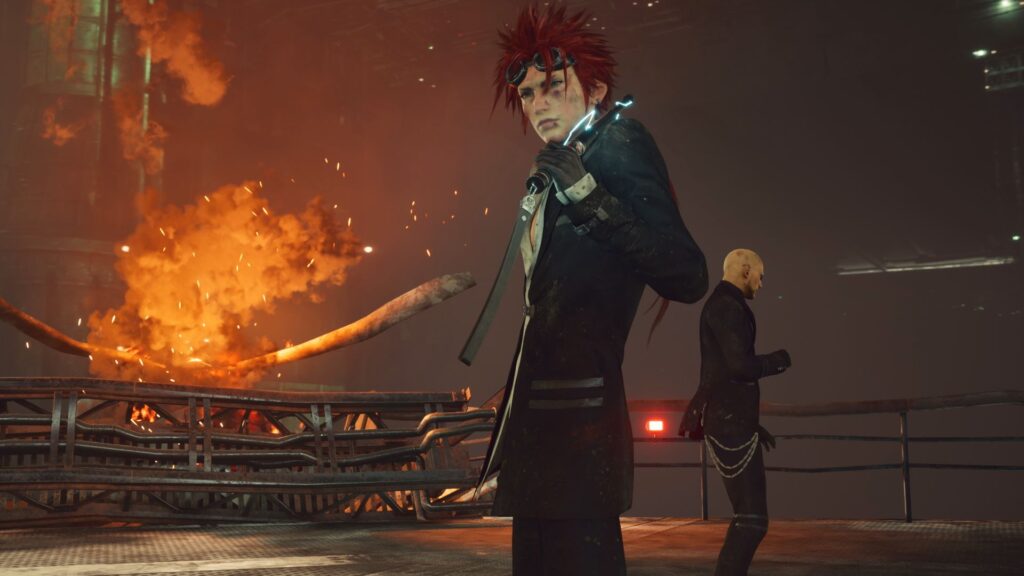
Thankfully, Intergrade addresses many of the ugly visuals that everyone noticed. Cloud’s door texture has finally been fixed. Skyboxes finally are convincing, and some rough looking heaps of Midgar garbage don’t look like low level detail figurative garbage.
Great care was put into Intergrade‘s boosted visuals to put the PlayStation 5’s specs to task, and the payoff is a success. Dense volumetric fog and haze makes the air in Midgar feel thick and heavy. The atmosphere is the kind of vile city air that makes your skin feel itchy and oily.
The only break in reality is that characters always look perfect and never get messy. Nobody gets sweaty, and clothes always stays clean and pressed. Everything in Midgar has a gritty and lived in quality about it, but characters always clash with the dirtiness of the city by always looking utterly immaculate.
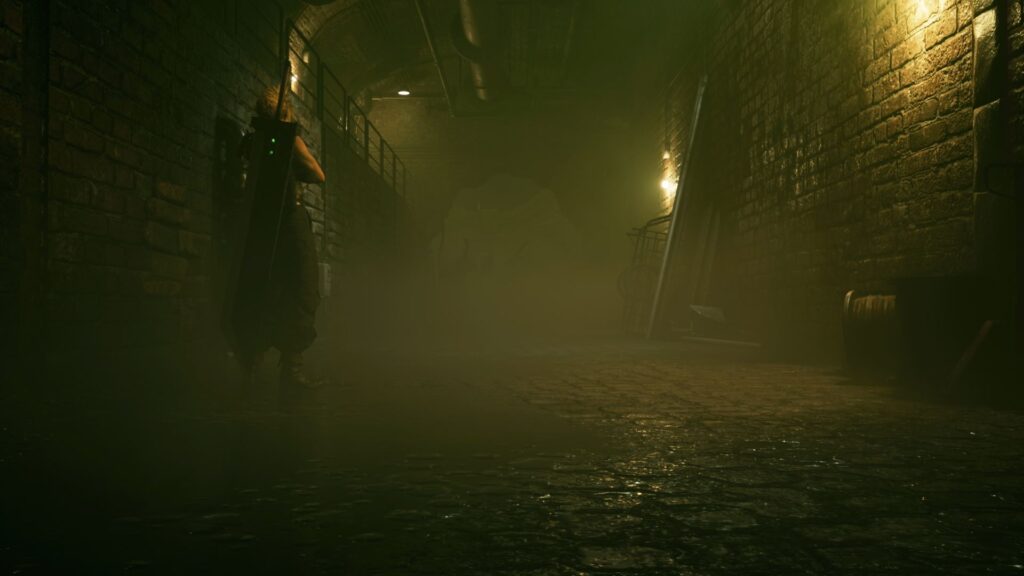
The new lighting makes every scene picturesque and inviting despite being set in a dystopian, urban nightmare. Wet streets glisten and moisture on worn metallic surfaces sparkle in the cloudy air. Characters are often backlit, and have appealing rim highlight that looks very convincing.
Shadow quality is impressive, and makes Intergrade‘s characters look better than the lifeless husks in Final Fantasy VII: Advent Children. Reflective light bounces colors on the flesh of characters, and the effect looks very natural. Everything feels grounded in the setting, and there is never a moment when shadows bug out and make characters look ugly.
Of course hair looks very realistic in Final Fantasy VII Remake, and it looks even more convincing in Intergrade. Stylized hair is Square Enix’s bread and butter. Even the contemptible Final Fantasy XV showed that no matter how much of a repugnant game that Square Enix can make, they will always deliver excellent hair.
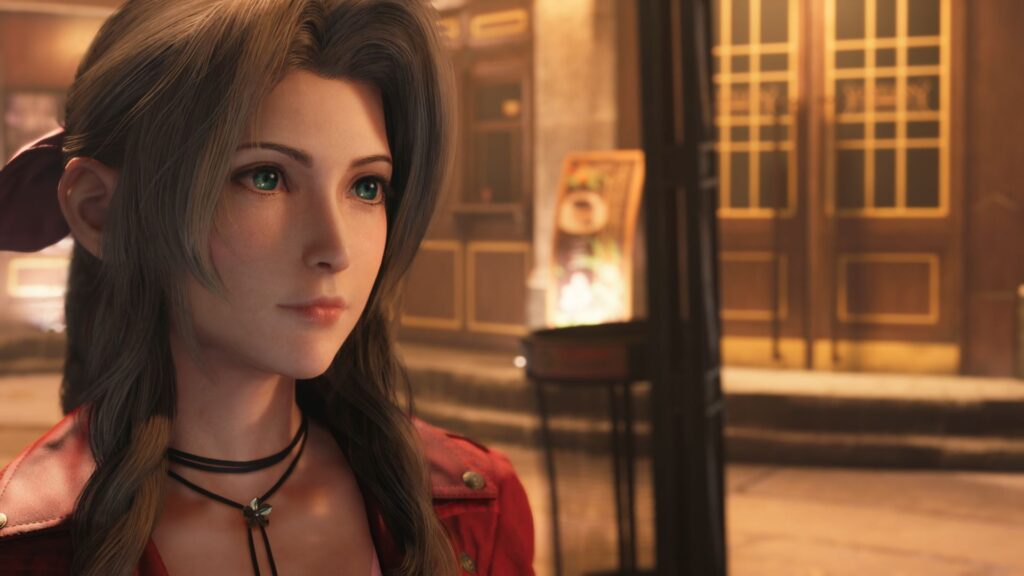
Intergrade looks amazing on PlayStation 5, but there was never any doubt that it wouldn’t this good. Square Enix may fumble with story telling here and there, but they can’t ever be accused of making an ugly game. Having great graphics is expected from them at this point.
Final Fantasy VII Remake: Intergrade is undeniably a substantial improvement to Final Fantasy VII Remake. The adjustments to the mechanics and increased frame rate do make this package very appealing, but $69.99 USD for a year old game is pushing it.
Anyone who was interested in Final Fantasy VII Remake would have played it by now, and Intergrade needed to be priced more competitively to attract people who never heard of the series.
Hopefully there will be fewer re-releases or updated ports of the inevitable Part 2, and Square Enix can make the game as good as it can be the first time. It’s appreciated that owners of the vanilla game get the PlayStation 5 upgrade for free; it would have been even better if this was the game that was released the at the beginning.
Final Fantasy VII Remake Intergrade was reviewed on PlayStation 5 using a review copy provided by Square Enix. You can find additional information about Niche Gamer’s review/ethics policy here.